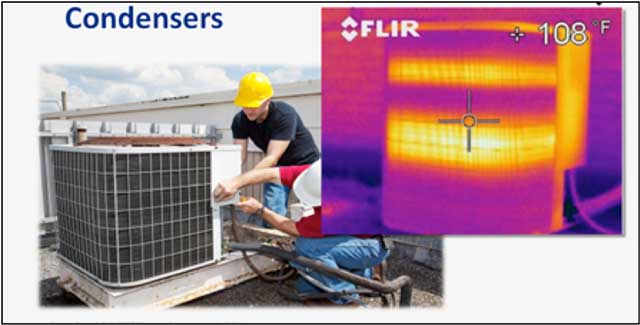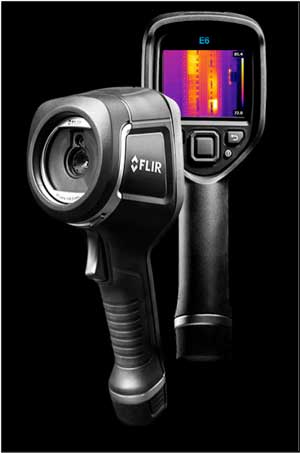
Commercial and industrial heating, ventilation and air-conditioning technicians usually work on regularly scheduled maintenance of HVAC systems to maintain operational efficiency. Off-schedule visits are also needed to diagnose and repair a specific problem that may arise and limit plant operations.
Customers want to avoid downtime and budget maintenance and repair expenses. They want to know in advance if something is going to fail, since the cost of downtime can be very high. In addition, the cost of the repair may require approvals to proceed.
A thermal imaging camera can help HVAC professionals quickly find the root cause of a problem, identify the faulty component and provide a level of trust that recommended repairs are indeed required.

The most common method used to diagnose temperature-related issues is to use a spot temperature gun, which is inexpensive and easy to use. However, the device depends on the user guessing where the problem may lie and then aiming it correctly, and they do not visually show the user where components are hot.
Thermal imaging cameras work by detecting the heat (or lack of heat) given off by an object and displays it in a range of colors: red, orange and yellow indicates heat, while dark blue, black or purple signify colder temperatures.
Thermal imaging is valuable for the speed of which it can diagnose basic HVAC problems. It is an effective tool for finding problems with fuses, breakers, connections, belts, bearings and hoses. It also helps see differential temperatures and find problems with the building construction that might have an impact on system performance. A thermal imaging camera can detect whether the evaporating units are working properly. For example, if the evaporator coil tubes are clogged, the camera can detect whether the flow is uniform, or whether only half the coil is working properly. Technicians can quickly scan every vent and register to see whether temperatures are uniform, or if any spots are too warm or too cold.
Thermal imaging makes it easier to conduct troubleshooting activities, especially with the electrical side of HVAC systems, guiding a technician to electrical components that may be overloaded or not operating at all. All operating circuits show some sort of heat during operations, but when several circuits look uniform, and one reads hotter or colder than the surrounding ones, it may be worth investigating.
Air leaks due to old or leaky ductwork, improper insulation or defective connections between components, normally invisible, can clearly be identified in a thermal image.
Showing the images to the customer can help support recommendations for remedial work that may be needed. Images collected over time can be used to look at the long term health of a component, or establish operational norms of properly operating equipment and trend analysis.
Sensor system and thermal imaging specialist FLIR Systems has many real-world examples of using thermal imaging to solve HVAC problems. When technicians can find (and display) an issue in minutes, rather than an hour of diagnostic testing, they can do the job faster and make more calls each day. Using thermal images can generate a higher level of trust that the work recommended is necessary and verify that the work has been done correctly, resulting in greater customer satisfaction.

